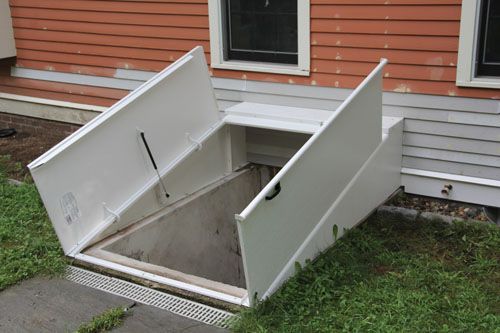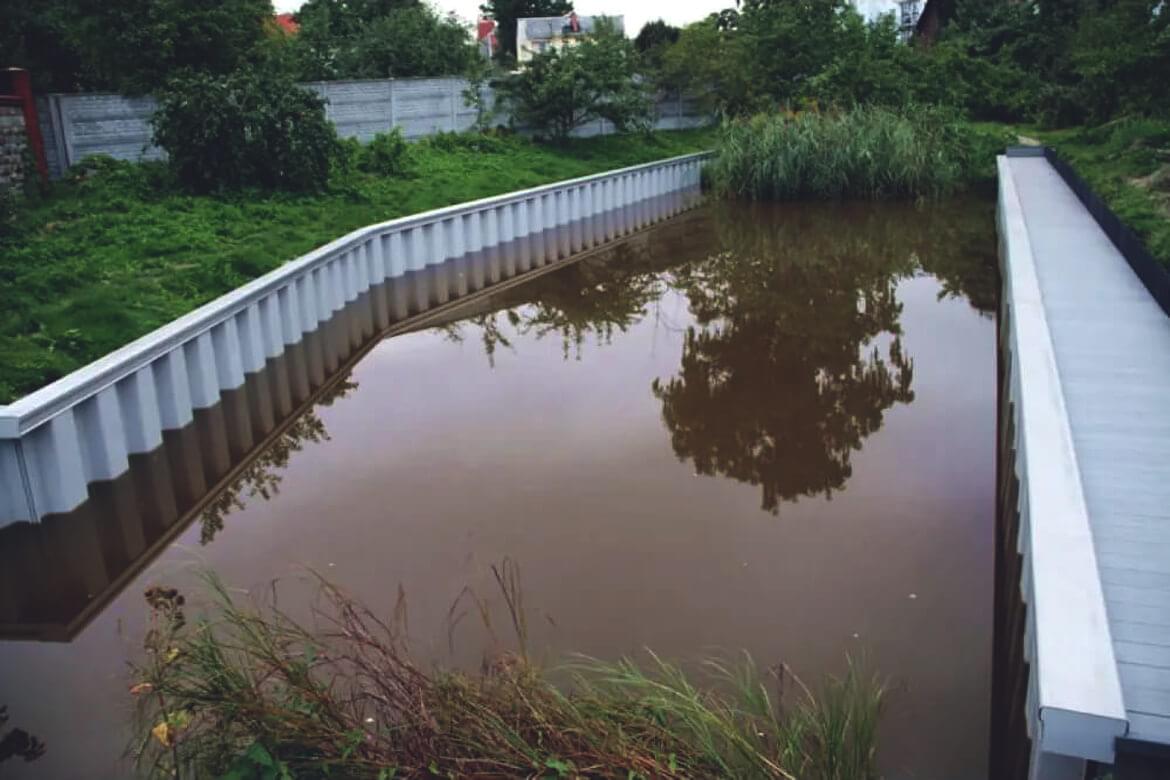Checking Out the Different Uses of Bulkhead Structures in Modern Design
Bulkhead frameworks play a substantial duty in contemporary architecture, serving both functional and aesthetic functions. They can specify rooms, boost storage space services, and improve lighting. In commercial settings, they work as prime focus that mirror brand identification - Bulkhead on Lake Livingston. In addition, their assimilation frequently supports audio management and sustainable methods. Comprehending the complete scope of their applications exposes much concerning modern layout trends and user experience. What innovative uses bulkheads might emerge in the future?
Defining Bulkhead Structures
Bulkhead structures play an important role in modern-day style, functioning as vital parts in numerous building designs. These frameworks are generally specified as raised ceilings or platforms, typically used to hide mechanical systems, electrical wiring, or plumbing. Bulkheads can be found in both commercial and property settings, where they provide a seamless blend of functionality and appearances. Their layout can integrate illumination components and various other ornamental elements, boosting the general visual allure of an area.
Commonly built from products such as drywall, timber, or metal, bulkheads can be personalized to fit the building style and needs of the structure (Bulkhead on Lake Livingston). They serve not just to conceal unsightly infrastructure however additionally to develop specified zones within open areas. By managing the flow of an area, bulkheads add to the spatial organization, making them a substantial element of modern building method. Their definition envelops both sensible and visual measurements.
Functional Applications in Residential Style
Bulkhead frameworks play an essential function in residential style by assisting in space optimization methods that take full advantage of usable locations. They contribute aesthetic layout components that improve the aesthetic appeal of living areas. Furthermore, these frameworks offer vital architectural support remedies, making certain the integrity and safety and security of the home.
Area Optimization Techniques
As modern-day property designs significantly focus on effective use space, cutting-edge techniques arise to make the most of performance without compromising aesthetics. One prominent approach entails the combination of bulkhead structures, which can mark locations while supplying important storage options. These structures can be used to develop vertical storage space systems that improve both organization and accessibility. In addition, multi-functional furniture, such as convertible sofas and collapsible tables, matches bulkhead designs, enabling spaces to adapt to differing needs. Open layout further maximize spatial flow, urging flexibility in use. Integrating built-in shelving and recessed illumination within bulkheads additionally adds to a streamlined atmosphere, making sure that every square inch of space is made use of properly and sympathetically within the total design.
Visual Design Components

Architectural Support Solutions
In modern residential layout, a reliable structural assistance remedy is necessary for maintaining the stability of spaces while optimizing design and functionality. Bulkhead frameworks play a substantial duty in this scenario, functioning as both support and partitioning components. They can hide mechanical systems, such as pipes and electric circuitry, while giving support to the ceiling and flooring systems. By tactically putting bulkheads, designers can create specified locations within open flooring strategies, enhancing usability without endangering architectural stability. Furthermore, these frameworks can fit lights fixtures, adding to both looks and functionality. To sum up, bulkhead frameworks are important in residential layout, offering functional support solutions that boost both the capability and visual charm of living rooms.
Enhancing Aesthetics in Business Rooms
When commercial spaces embrace innovative bulkhead structures, they not just specify physical borders but also considerably enhance the overall visual appeals of the setting. These architectural components work as aesthetic focal points, attracting focus and creating a sense of intrigue. By integrating diverse products such as timber, steel, or glass, bulkheads can mirror a brand name's identity and mission, adding to a natural design.
In addition, the critical positioning of bulkheads can control light and darkness, adding depth and measurement to otherwise level areas. This interplay can change a business area into an inviting ambience, urging consumer interaction. In addition, using color and appearance in bulkhead style can evoke certain feelings, improving the total consumer experience. Eventually, the thoughtful integration of bulkhead frameworks elevates the aesthetic appeal of industrial rooms, making them not only useful but also visually enchanting, therefore promoting a long-term impression on site visitors.
Acoustic Efficiency and Audio Administration
Effective acoustic efficiency plays an essential role in modern design, specifically within commercial areas where sound management is vital. Bulkhead frameworks can significantly improve acoustic top qualities by soaking up noise, lowering reverberation, and mitigating sound transfer in between areas. These functions are particularly advantageous in atmospheres such as movie theaters, restaurants, and workplaces, where clear communication and an enjoyable auditory experience are extremely important.
The strategic placement and layout of bulkheads can aid develop sound-buffer areas, effectively isolating noisy locations from quieter ones. Materials utilized in bulkhead building and construction, such as soft coatings and acoustic panels, add to their sound-dampening capabilities. Furthermore, the incorporation of bulkheads enables the integration of sound-absorbing aspects without jeopardizing aesthetic charm. By addressing acoustic efficiency, architects can produce harmonious settings that improve convenience, improve individual experience, and promote productivity, making bulkheads an essential element in the layout of modern industrial areas.
Integrating Bulkheads for Reliable Area Use
Commonly ignored, the assimilation of bulkheads in architectural design can greatly improve area use in modern-day buildings. These structural aspects serve multiple sensible purposes, providing a way to conceal mechanical systems, electrical circuitry, and plumbing without compromising visual appeals. By strategically positioning bulkheads, engineers can develop defined areas within open layout, therefore facilitating much better company and flow.
In addition, bulkheads can incorporate storage options and illumination features, taking full advantage of the capability of or else squandered vertical room. In property setups, they may define check that areas such as kitchens or living locations, while in commercial areas, they can enhance the effectiveness of designs by plainly noting pathways and workspace.
Eventually, the thoughtful combination of bulkheads adds to a much more aesthetically attractive and well organized environment, allowing for adaptable rooms that can progress with the needs of their occupants. This approach not just optimizes space yet also promotes a more harmonious communication in between form and function.
Bulkheads in Public Architecture

Architectural Visual Enhancements
While several building aspects goal for capability, bulkheads in public design serve a dual purpose by boosting visual appeal. These frameworks frequently develop aesthetic rate of interest with their style, incorporating perfectly with bordering aspects. By employing various products, textures, and colors, bulkheads can add to an unique identity for public areas, such as airport terminals, galleries, and collections. Their strategic placement assists to mark locations, leading site visitors while including deepness to the total layout. Additionally, bulkheads can accentuate illumination, creating vibrant ambiences that transform throughout the day. This aesthetic improvement not only elevates the site visitor experience but also promotes a sense of area, making bulkheads an important consideration in modern public architecture. On the whole, bulkheads embody the fusion of type and function.

Architectural Assistance Solutions
As engineers look for innovative means to enhance the structural stability of public areas, bulkheads arise as crucial elements in the style and building and construction procedure. These frameworks give crucial assistance, particularly in areas based on hefty foot website traffic or vibrant lots. By dispersing weight equally, bulkheads aid stop architectural failure while enabling versatile design alternatives. In big locations, such as stadiums and convention facilities, bulkheads are usually incorporated into the general architectural structure, making sure stability and safety. Furthermore, they can promote the unification of energies and mechanical systems, contributing to the efficiency of area usage. Eventually, bulkheads represent a crucial service in modern public design, strengthening both functionality and safety in community-focused settings.
Environmental Management Steps
Including environmental protection procedures into public style has actually come to be increasingly essential as metropolitan designers focus on sustainability together with structural assistance. Bulkhead frameworks serve a twin objective in this regard, functioning as barriers against erosion and flooding while at the same time enhancing the aesthetic charm of city landscapes. Their layout usually consists of natural components such as plants, which can boost air high quality and supply habitats for wildlife. Furthermore, bulkheads can be crafted with absorptive products that enable water absorption, decreasing runoff and advertising groundwater recharge. This assimilation of environmental considerations not only maintains the atmosphere but additionally cultivates community resilience versus climate adjustment. By utilizing bulkheads properly, architects add to sustainable metropolitan development that aligns with modern environmental objectives.
Future Patterns in Bulkhead Design
Emerging fads in bulkhead style reflect a growing emphasis on sustainability, technology, and performance in modern-day wikipedia reference design. Developers are progressively incorporating green materials, such as recycled composites and bioplastics, to minimize ecological impact. In addition, the integration of clever modern technology is becoming prevalent, allowing bulkheads to serve multi-functional objectives, including power storage and environment control.
In urban setups, modular bulkhead systems are gaining grip, supplying flexibility in design and convenience of setup. These systems can be adjusted to different landscapes, enabling reliable room application. Furthermore, aesthetic considerations are progressing; bulkheads are currently being designed to enhance aesthetic appeal, typically integrating artistic components that reverberate with neighborhood society.
As environment durability becomes a priority, future bulkhead designs will likely prioritize flood protection and stormwater management, making sure architectural integrity while addressing environmental obstacles. This change indicates a holistic approach to architecture that meets both environmental obligations and human needs.
Frequently Asked Concerns
What Products Are Generally Used for Bulkhead Construction?
Common products for bulkhead building include concrete, steel, timber, and composite products. These alternatives provide longevity, structural integrity, and resistance to environmental elements, making them ideal for numerous applications in building and engineering jobs.
Exactly How Do Bulkheads Affect Structure Energy Efficiency?
Bulkheads enhance building power effectiveness by giving thermal insulation and reducing air leakage (Bulkhead on Lake Livingston). They assist maintain indoor temperature levels, therefore reducing home heating and cooling down demands, inevitably bring about reduced power costs and improved ecological sustainability
Are There Any Kind Of Structure Codes Specific to Bulkhead Structures?
Yes, constructing codes details to bulkhead frameworks exist, differing by area. These guidelines typically resolve safety and security, structural integrity, and availability, making certain that bulkheads fulfill called for requirements for building and construction and style within an offered jurisdiction.
Can Bulkheads Be Conveniently Modified or Gotten Rid Of Later?
Bulkheads can often be modified or gotten rid of, relying on their layout and construction. Such modifications might require careful planning and adherence to building codes to guarantee structural integrity and safety and security are kept throughout the process.
What Are the Expenses Linked With Installing Bulkhead Structures?
The costs related to setting up bulkhead structures can vary substantially, commonly affected by materials, style intricacy, and labor. Usually, costs range from moderate to high, depending on the project's particular requirements and location.
Bulkhead structures play a crucial role in modern-day design, offering as crucial components in numerous building layouts. Bulkhead structures play a crucial duty in domestic design by assisting in area optimization approaches that make the most of useful locations. Typically overlooked, find more information the integration of bulkheads in building design can greatly boost space use in modern structures. As architects look for cutting-edge methods to enhance the structural stability of public areas, bulkheads arise as necessary components in the style and building process. The expenses associated with setting up bulkhead structures can differ significantly, commonly influenced by products, layout complexity, and labor.